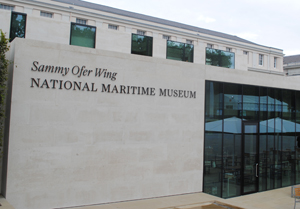Hidden beneath an office building in Lower Thames Street opposite the former Billingsgate Fish Market are the remains of some of London’s best preserved Roman ruins in the form of an expansive house and baths complex.
 Last weekend, the Festival of British Archaeology presented a rare opportunity to visit the property which has been the subject of an extensive conservation project.
Last weekend, the Festival of British Archaeology presented a rare opportunity to visit the property which has been the subject of an extensive conservation project.
The remains of the buildings were first discovered by workmen building the New Coal Exchange in 1848 (this was demolished in the 1960s and the current office building constructed in its place in the 1970s – the ruins now sit in its basement).
While the house – which may have formed an L-shape or three-sided building stretching around a courtyard – dates back to the 2nd century AD, the baths complex – which is believed to be located in the house’s courtyard – were added the following century. The buildings, both of which feature an underfloor heating system known as a hypocaust, are notable for the fact that they remained in use until the early 5th century AD when much of what had been Roman Londinium was then already in decline.
Visitors to the baths would first have visited the cold room (frigidarium) before moving on to the warm room (tepidarium) and then the hot room (caldarium) which was heated by the hypocaust. There they would pause to remove dirt and oils from their skin using curved metal scrapers known as strigils before retracing their steps to the cold room where they are believed to have either jumped bravely into a plunge pool or splashed cold water over themselves.
The site includes two furnaces – one at the house and another at the baths – used for heating the space under the floors. The fact both buildings were constructed of stone indicates they were either owned by a wealthy family or were for communal use, perhaps as an inn for travellers.
The objects found in the premises include hoard of bronze coins (all minted after 395 AD) and a bronze brooch, believed to have belonged to a Saxon woman who must have dropped it after 450 AD when the bath house may already have been in ruins.
You can follow the conservation work being currently being carried out on the property – a joint project involving the City of London Corporation, the Museum of London, English Heritage, Nimbus Conservation and the Institute of Archeology of University College London – here: www.billingsgatebathhouse.wordpress.com. It’s expected the ruins will next be opened to the public for the Open House weekend on September 17th/18th.
